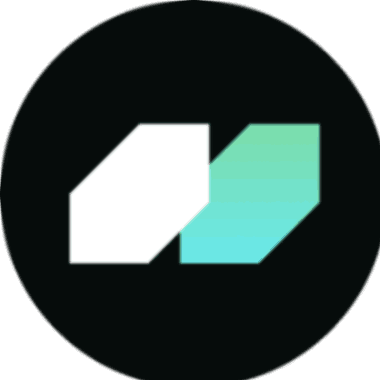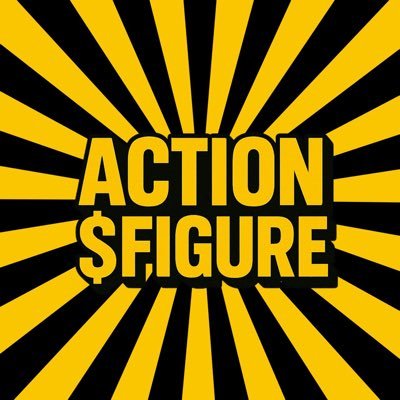


Dai priceDAI
DAI to USD converter
How do you feel about Dai today?
About Dai (DAI)
What Is MakerDAO Stablecoin?
MakerDAO Stablecoin (DAI) is a pivotal project within the world of Decentralized Finance (DeFi), having emerged in 2015 following the launch of Ethereum's first mainnet. The dedicated team of developers spent two years crafting the framework that allows for the creation of DAI Stablecoin. MakerDAO, the decentralized autonomous organization behind DAI, ensures its decentralized nature and impartiality.
Additionally, MakerDAO laid the groundwork for lending and borrowing activities on the Ethereum blockchain, with the primary goal of reducing reliance on financial intermediaries and facilitating access to loans.
Unlike USDT or USDC, DAI Stablecoin's value is pegged to the US Dollar at a 1:1 ratio without the need for physical reserves. MakerDAO enables borrowers to generate DAI by depositing collateral. The supported collaterals include Ethereum (ETH), Wrapped Bitcoin (WBTC), ETH-Staked ETH Liquidity Pair on Curve v1 (CRVV1ETHSTETH), Wrapped stETH (WSTETH), and over 10 other cryptocurrencies.
One remarkable aspect of DAI is its status as an algorithmic stablecoin. Its value remains consistently pegged to US$1.00 throughout its existence due to the clever smart contract design of MakerDAO. This design governs which collaterals are accepted, the corresponding collateral ratio, and the destruction of DAI when loans are repaid. As a result, MakerDAO retains control over the circulating supply of DAI and, consequently, its value.
A crucial aspect of DAI Stablecoin's design is overcollateralization. The requirement for collaterals to exceed the amount of DAI issued by more than 100% is essential to mitigate default risk for lenders. This approach directly addresses the volatility of cryptocurrency values, thereby maintaining the peg between DAI and USD and safeguarding the value of lenders' assets.
Resources
Whitepaper: https://makerdao.com/en/whitepaper
Official website: https://makerdao.com/en/
How does MakerDAO Stablecoin work?
Taking out a loan
To initiate the issuance of DAI Stablecoins, a borrower deposits collateral, resulting in the creation of new DAI. Upon returning the original amount of DAI, the borrower's collaterals are returned, and the returned DAI is destroyed to prevent an excessive number of circulating tokens. Due to potential arbitrage activities, the borrower might earn more DAI than the original amount, allowing them to keep the difference.
Liquidation
In cases where a borrower fails to repay the loan in DAI or the collateralization ratio falls below the required level, liquidation occurs. The overcollateralization rule mandates that the collateral-to-DAI ratio must always exceed 100%, for example, 175% for wBTC. This means that if a borrower deposits US$175 in Bitcoin, they'll receive a loan of US$100 in DAI, with the remaining US$75 reserved for the mentioned extreme scenarios. To safeguard the system from impaired loans, anyone can trigger the liquidation function on the contract and receive a percentage of the balance as a reward.
What Determines MakerDAO Stablecoin Price?
The Dai stablecoin, a crucial player in the decentralized finance (DeFi) ecosystem, derives its value from an intricate system that aims to keep the current Dai price in USD as stable as possible. Engineered by MakerDAO, this system of smart contracts on the Ethereum blockchain utilizes Collateralized Debt Positions (CDPs) to determine the Dai value. Users can lock up assets like ETH in these CDPs, which are over-collateralized, thereby ensuring the Dai USD price remains stable. For example, if you were to lock up $300 worth of ETH, you could borrow up to 66% of the collateral's value in Dai, maintaining a collateralization ratio of 150%. This over-collateralization plays a pivotal role in Dai price stability.
If you're ever asking, "What is the current price of Dai?" or "Is the price of Dai going up?", the answer can be found in its robust governance and technical architecture. Real-time Dai price is a complex outcome of smart contracts, governance by MKR token holders, and automated market mechanisms. All these factors contribute to making Dai one of the most reliable assets in the cryptocurrency landscape, often leading to discussions about Dai price prediction for 2023 and beyond. This makes it essential for anyone interested in stablecoins or Dai price analysis to understand the sophisticated systems at play.
Conclusion
In conclusion, MakerDAO Stablecoin (DAI) is a pivotal project in DeFi, offering a decentralized and stable solution pegged to the US Dollar. Its innovative algorithmic design and overcollateralization ensure stability and reliability, making it a driving force in the decentralized financial ecosystem.
It's important to note that like any other cryptocurrencies, MakerDAO Stablecoin carries its own risks and it's always wise to do your own research and exercise caution while investing.
AI analysis report on Dai
Dai price today in USD
Dai price history (USD)
 Lowest price
Lowest price Highest price
Highest price 
What is the highest price of Dai?
What is the lowest price of Dai?
Dai price prediction
When is a good time to buy DAI? Should I buy or sell DAI now?
What will the price of DAI be in 2026?
What will the price of DAI be in 2031?
FAQ
What is DAI?
What is stablecoin?
How does DAI maintain its peg to the US dollar?
How is DAI Stablecoin backed?
How does overcollateralization work in DAI's design?
Is DAI a safe investment?
What is the current price of Dai?
What is the 24 hour trading volume of Dai?
What is the all-time high of Dai?
Can I buy Dai on Bitget?
Can I get a steady income from investing in Dai?
Where can I buy Dai with the lowest fee?
Dai news
Dai updates
USDT vs USDC: A Simple Guide for Beginners
Morpho (MORPHO): Unlocking the Power of Decentralized Lending
ApeChain Unveiled: The Blockchain That Amplifies BAYC’s Legacy with a 132% Token Surge on Day One
Supercharge Your Price Arbitrage Strategy On Bitget With Bitget Crypto Loans
USDC vs USDT: Differences Explained
Ethena Labs' USDe: A New Dawn For Synthetic Stablecoins
Blast (BLAST): The Innovative Layer 2 That Introduces Native Yield for ETH and Stablecoins
Unlock Fun And Fortune: Our Step-By-Step Guide To Join The New Bitget Referral Program
Get To Know Some Representatives Of RWAs On Bitget
The DeFi Surge: Promising Projects and Opportunities
Dai market
Dai holdings
Dai holdings distribution matrix
Dai holdings by concentration
Dai addresses by time held
Global Dai prices
- 1
- 2
- 3
- 4
- 5
How to buy Dai(DAI)

Create Your Free Bitget Account

Verify Your Account

Convert Dai to DAI
Join DAI copy trading by following elite traders.
New listings on Bitget
Buy more
Where can I buy Dai (DAI)?
Video section — quick verification, quick trading

DAI to USD converter
Dai ratings
Bitget Insights

Related assets
Additional info on Dai
Coin overview
Coin-related
Trade-related
Coin updates
Trade
Earn
DAI/USDT
SpotDAI/USDT
Margin






























































Dai Social Data
In the last 24 hours, the social media sentiment score for Dai was 4, and the social media sentiment towards Dai price trend was Bullish. The overall Dai social media score was 2,012, which ranks 152 among all cryptocurrencies.
According to LunarCrush, in the last 24 hours, cryptocurrencies were mentioned on social media a total of 1,058,120 times, with Dai being mentioned with a frequency ratio of 0.01%, ranking 227 among all cryptocurrencies.
In the last 24 hours, there were a total of 63 unique users discussing Dai, with a total of Dai mentions of 108. However, compared to the previous 24-hour period, the number of unique users decrease by 7%, and the total number of mentions has decrease by 31%.
On Twitter, there were a total of 3 tweets mentioning Dai in the last 24 hours. Among them, 100% are bullish on Dai, 0% are bearish on Dai, and 0% are neutral on Dai.
On Reddit, there were 0 posts mentioning Dai in the last 24 hours. Compared to the previous 24-hour period, the number of mentions decrease by 100% .
All social overview
4